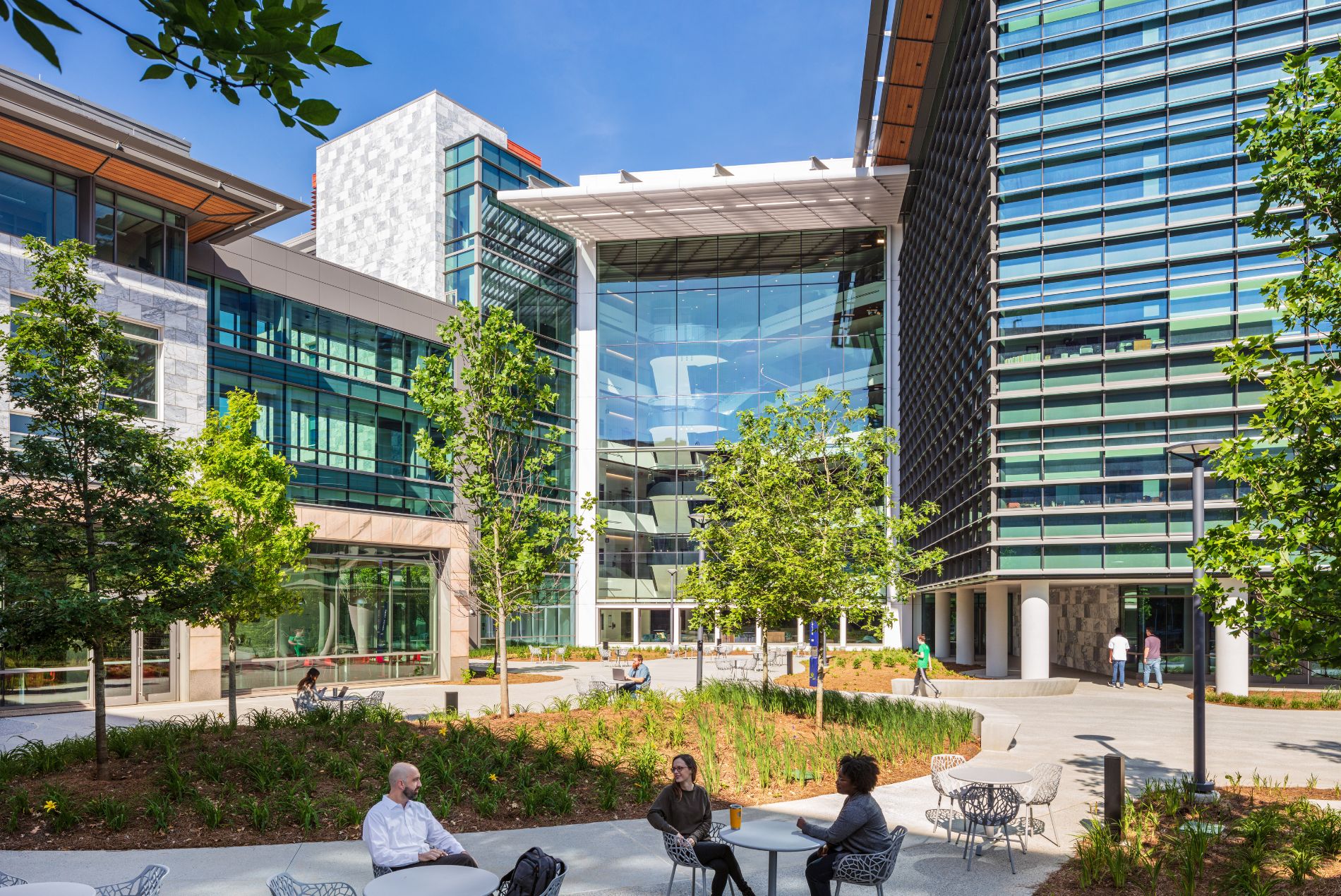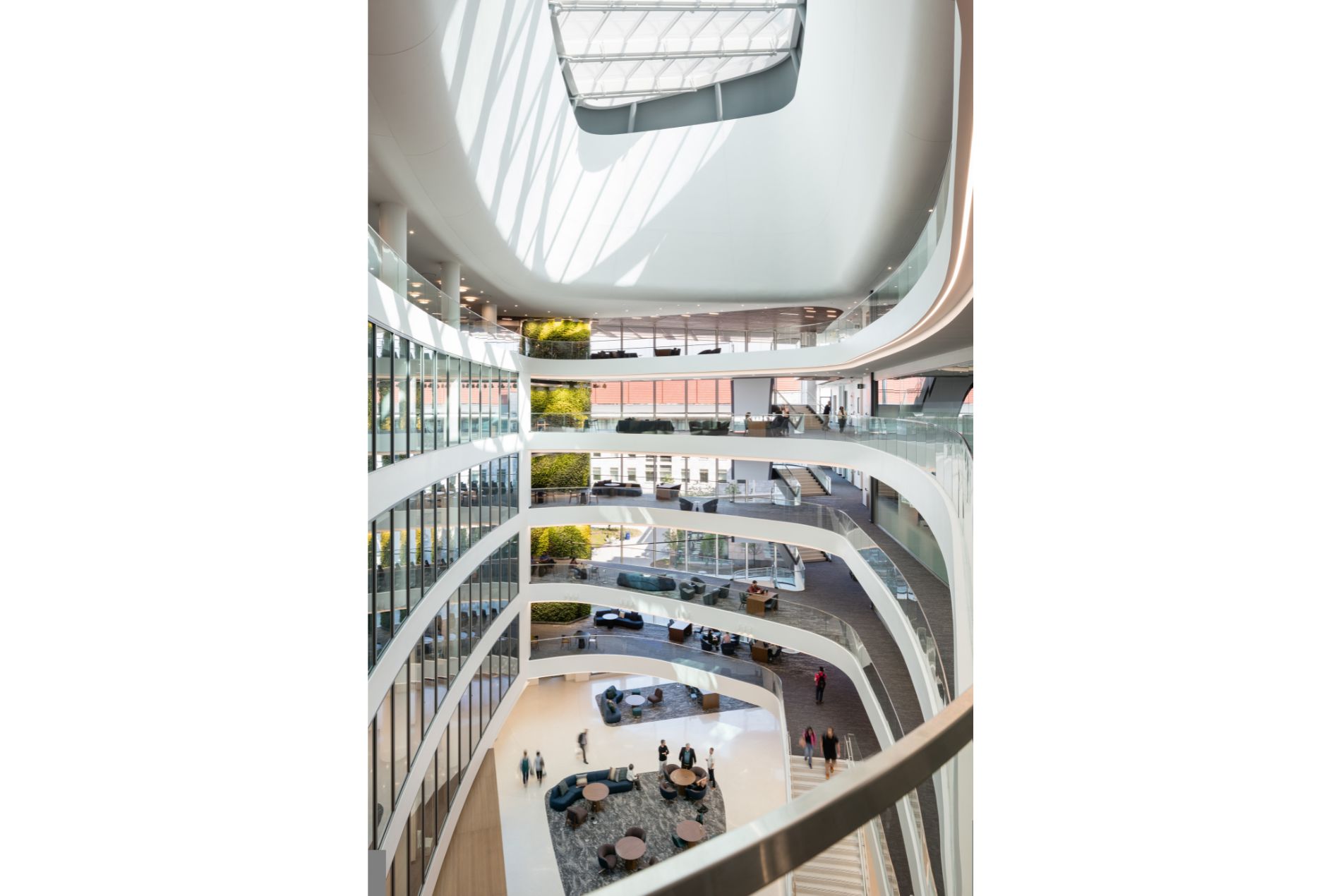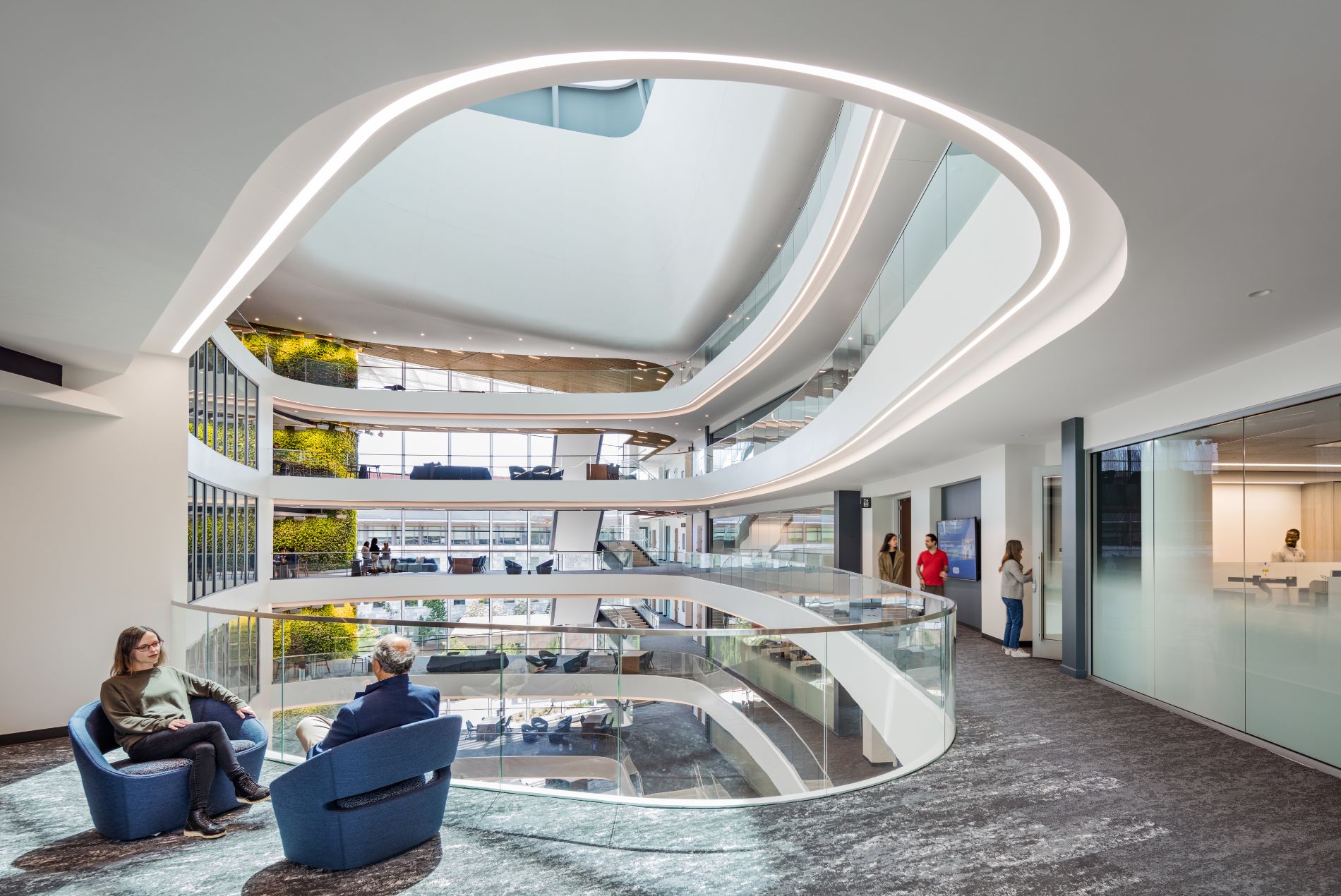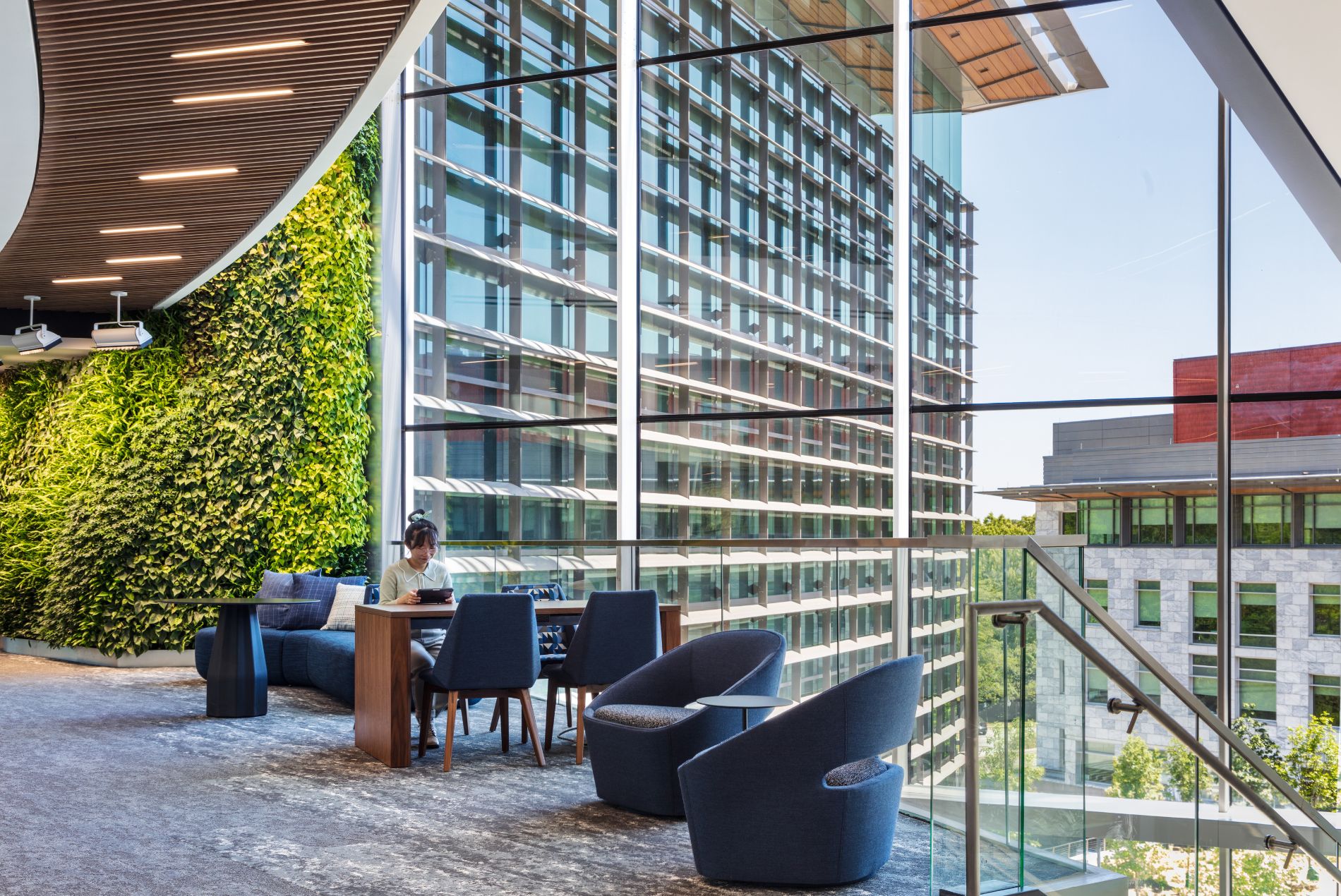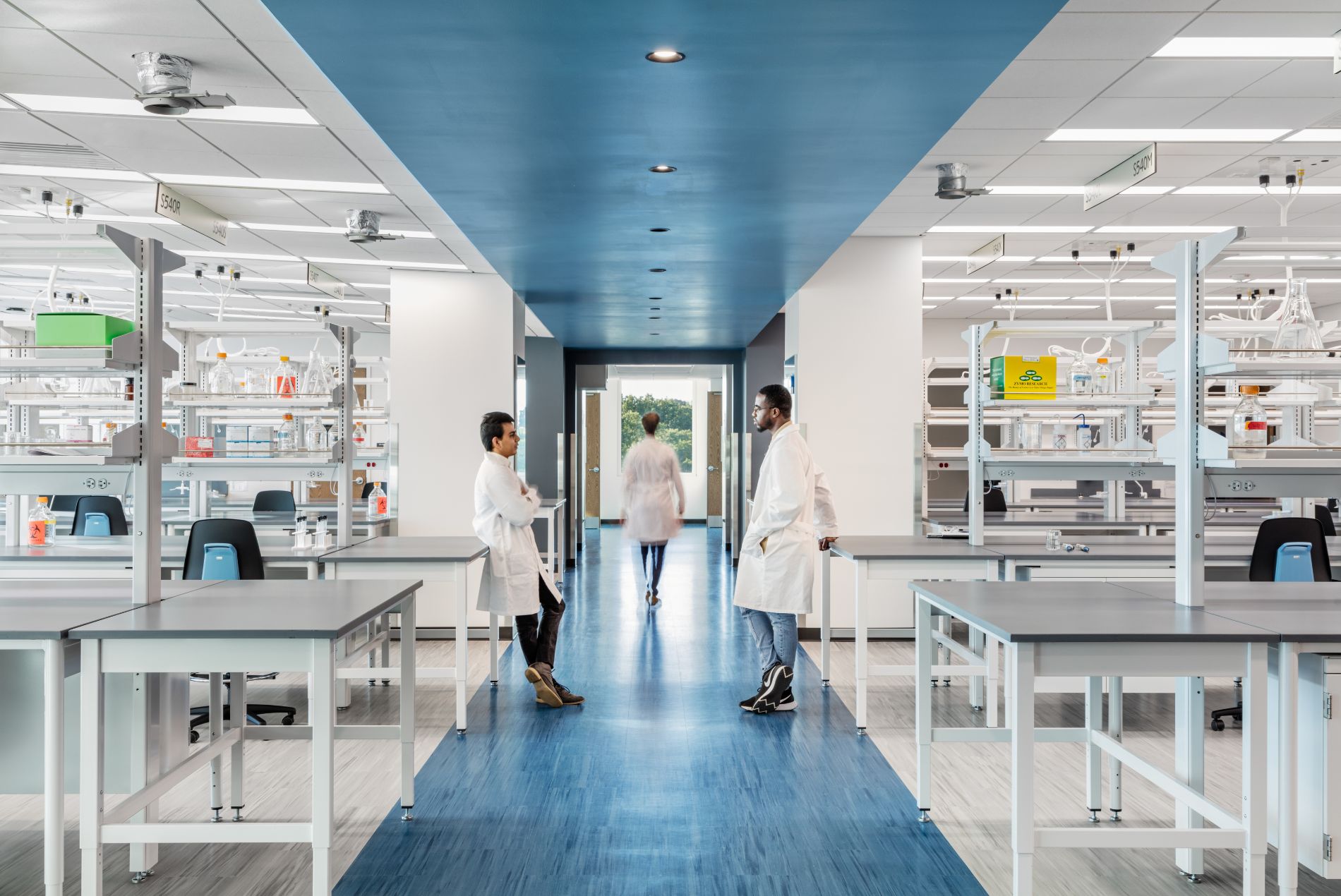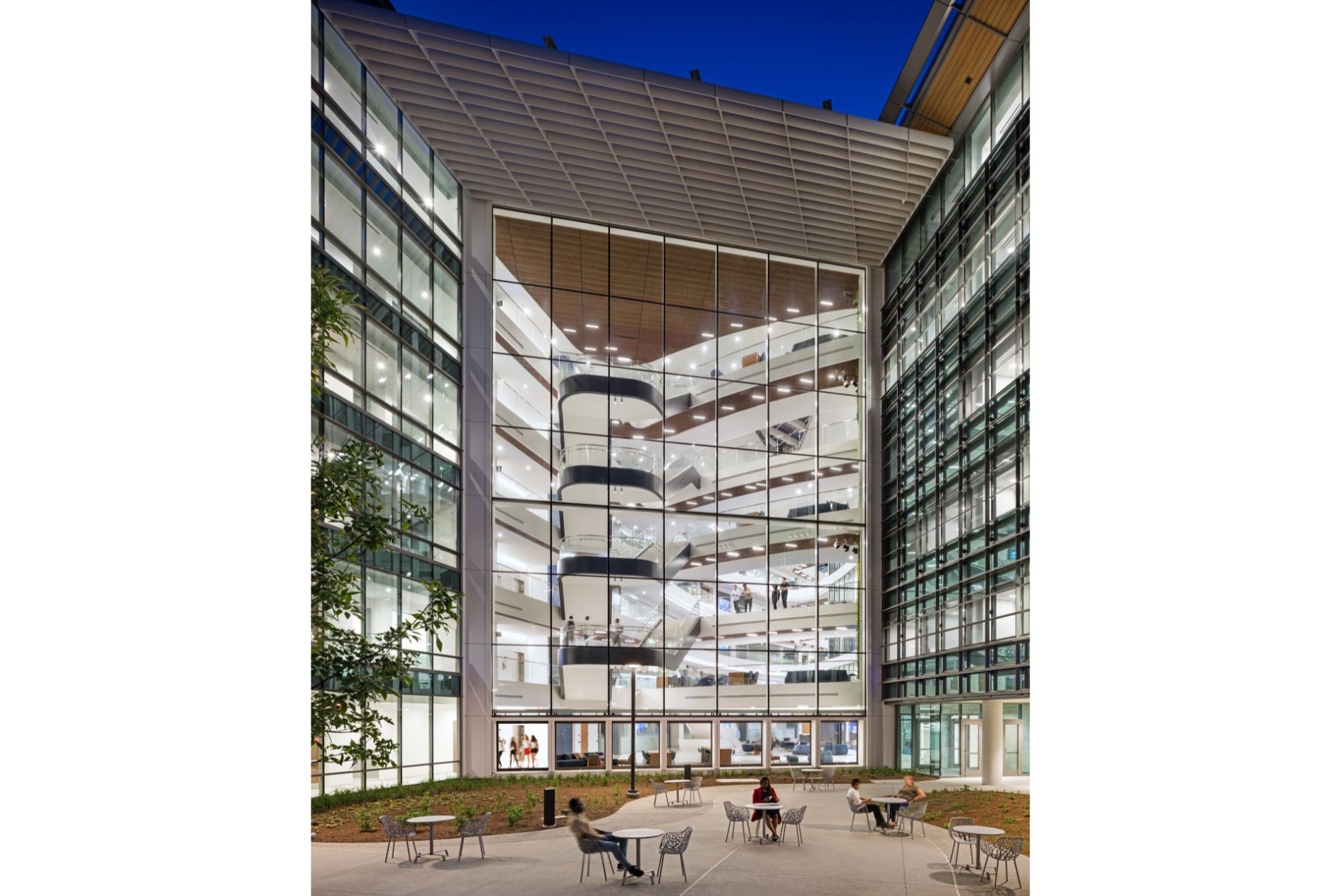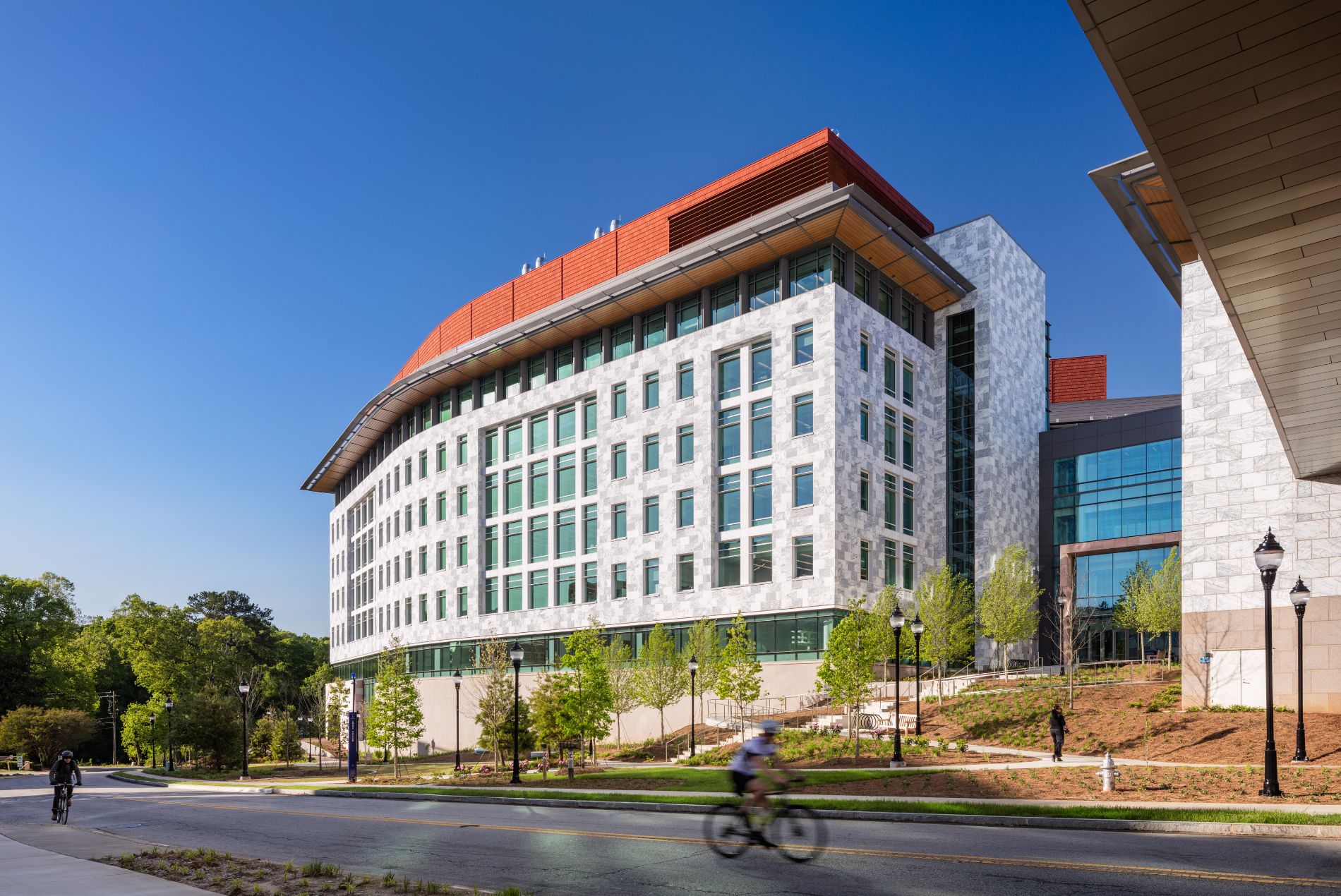With a goal to expand its research capacity, Emory University worked with HOK to design a scientific facility that accelerates biomedical discovery. The building supports multidisciplinary collaboration among researchers and serves as a model for sustainability and wellness.
Design Solutions
The eight-story building organizes open labs and collaborative workspaces to foster rapid discovery and cross-disciplinary coordination. HOK provided lab planning and programming services for various research teams, including imaging sciences, cardiovascular medicine, biomedical engineering, child health, cancer, inflammation, immunity and immunotherapeutics, and emerging infections.
Core facilities—including advanced imaging, flow cytometry, a biorepository and genomics—are distributed throughout to encourage interaction among experimental, computational and core technology teams. At ground level, an innovation zone supports startups and entrepreneurial research aimed at translating scientific discoveries into clinical and health system technologies.
A six-story atrium anchors the building. Sculpted pedestrian bridges, a multi-tiered cantilever stair and a full-height glass facade supported by concealed trusses enhance circulation and visibility. A large skylight and automated shading systems balance natural light and thermal comfort to enhance occupant well-being and reduce energy use. Balconies along the north facade and a six-story green wall bring nature indoors and offer spaces for respite.
Interior finishes include natural stone, warm wood and a palette of grays, blues and neutrals, reinforcing a connection to nature and supporting focus and comfort. Outside, landscape elements with native vegetation draw the adjacent forest close to the building.
The design supports Emory’s campus-wide sustainability efforts and energy reduction goals. The building achieved LEED Gold certification and cut embodied carbon by 5–10% through passive-first strategies and efficient systems. These include daylighting, automated shades, a solar panel array, a microgrid energy management system, permeable paving, a rainwater capture system and a green roof plaza facing Emory’s Lullwater Preserve. Space has been reserved for a future blackwater capture system. The project team published a case study on the building’s energy-efficient design.
Impact
The Health Sciences Research Building II expands Emory’s research capacity and strengthens Atlanta’s position as a hub for biomedical innovation. By uniting laboratory, technology and entrepreneurial functions under one roof, the building accelerates research translation into life-saving therapies.
Recognized for its innovative design and engineering, the project has received the 2024 SEAOG Structural Engineering Excellence Award, the 2024 ASID Design Excellence Gold Award and the 2023 AIA Georgia’s People’s Choice Award for Unbuilt Projects. The design has been featured in Building Design + Construction and Tradeline.
